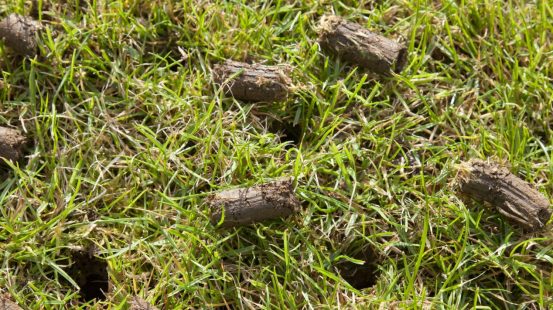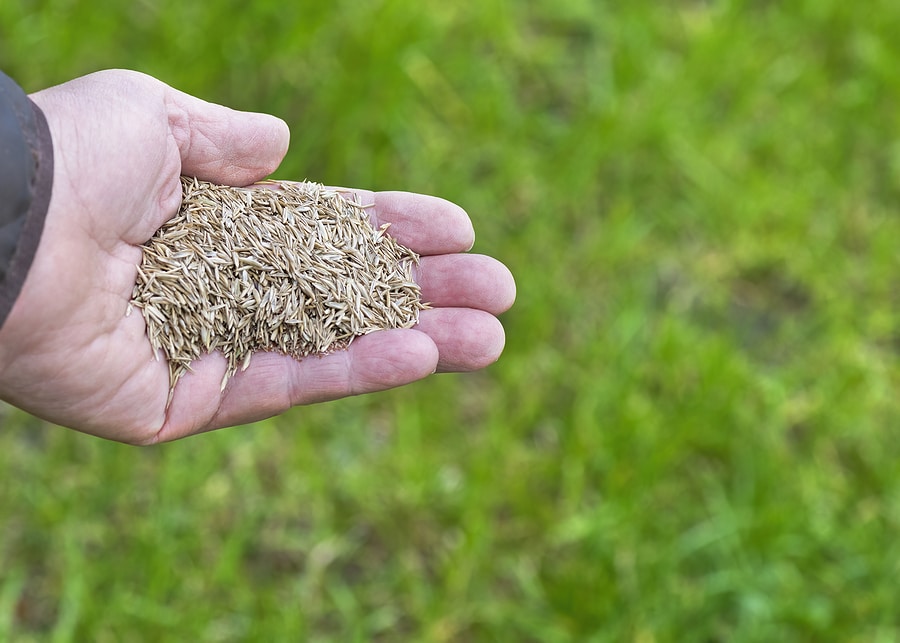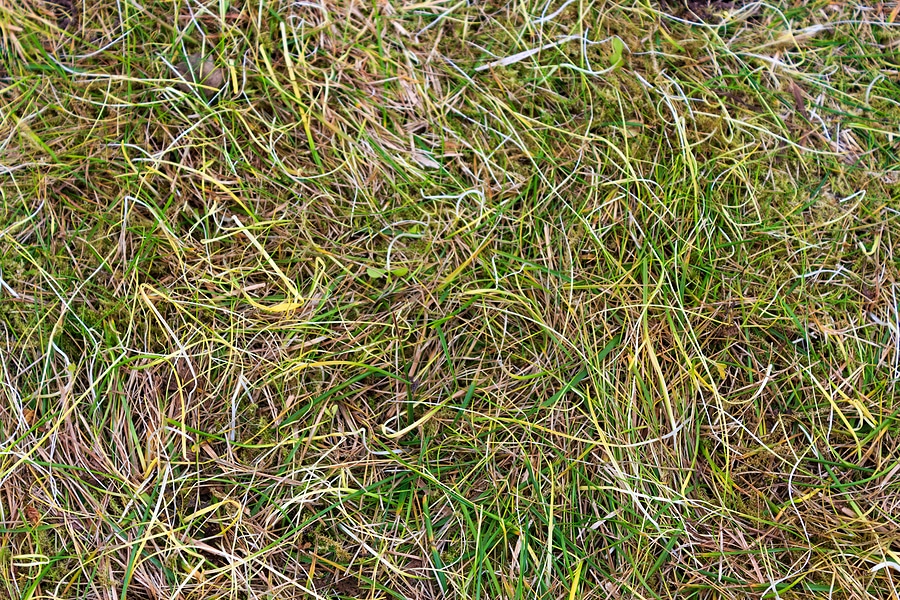Aeration and Seeding

Plants require sunlight, water, air and nutrients to grow healthy. Just like tilling your gardening or a farmer plowing a field, your lawn needs similar action to improve the flow of air, nutrients, and water to the roots. Loosening the soil through aeration provides benefits that can help reduce the need for inputs above ground, such as fertilizer and weed control products. Sometimes aeration alone is not enough. Seeding your lawn with new genetics can help your lawn fight pests, diseases, weeds, and drought. This further minimizes the need for more applications to have a perfect lawn. A healthy lawn is built on a foundation of strong, healthy grass that resists pests. Aeration and seeding are critical components to a healthy lawn.

Aeration types
Dependent upon your lawn’s needs, we offer two types of aeration services.

Core Aeration
Pulls plugs of soil from your lawn to create channels for air, water, and nutrients to reach the roots. Also allows roots to move deeper into your soil. Improves root growth, reduces plant stress, relieves compaction in the soil. Highly recommended for newly sodded lawns to help the roots reach the soil below.

Liquid Aeration
Liquid aeration (with a proprietary blend of ingredients) helps increase water filtration, increase soil nutrient holding capacity, and promotes soil ecosystem growth. This achieves many benefits of core aeration without the mess of conventional aeration.
Questions About Aearation
Q: How do I know if my lawn needs aeration?
Over time, a dense layer of dead grass builds up on your lawn. This will happen naturally over time, but it can be worse were more pressure is being put upon the grass, like places with heavy foot traffic, or where puddles often form.
One way to quickly test if your lawn needs aeration is to poke a screwdriver or shovel into the soil. If there you are able to break through the thatch with relative ease, your lawn should be fine. However, if there is a lot of resistance, that is a sign your lawn may need aeration.
Q: When should I start aerating?
In the Twin Cities region, the best time to aerate the lawn is between mid-August and the end of October. The soil is warm enough to encourage lawn recovery, and the holes fill in before winter sets in. Spring is another option for aeration, but it is discouraged because weeds often fill in the open holes during spring aeration.
Q: How to get the most out of lawn aeration?
To get the most out of core aeration, it should be done when your lawn is moist. Watering your lawn the day before will ensure that the aeration process goes smoothly. However, be careful not to over water your lawn, if the lawn is too wet, otherwise this will cause issues, the soil should feel slighlty damp, not soaking wet.
One mistake people make when aerating their own lawn is that they aerate too frequently. Aerating too frequently can actually damage your lawn’s roots. This is why we recommend Spring or Fall, because that is when root growth is at its greatest.
Contact bioLawn for professional lawn aeration services. We will be sure you get the most out of you lawn’s aeration!
More Information About Seeding Services

Enhance your lawn with seeding—it boosts density, repairs patches, and introduces advanced genetics for pest resistance. We pair seeding with lawn aeration to ensure strong establishment, breaking up the soil for better seed contact. At bioLawn, we use top seed genetics, emphasizing drought resistance, disease tolerance, and quick germination. This minimizes inputs for quality maintenance. Our grass seed blend includes Kentucky Bluegrass, Fine Fescues, and Perennial Ryegrass. Your active role is crucial, and we provide clear instructions for success. While we can’t control the weather, our recommendations guide you based on conditions. Consider our Organic Seeding Feed Service—an organic fertilizer to kickstart grass growth and establishment for optimal results.

Over Seeding
Core aeration of the lawn and overseeding of the lawn. Typically done to the entire lawn. Promotes a thicker, denser lawn. Helps fill in thin areas of the lawn. See Renovation if you have large bare areas. We offer overseeding both in the spring and fall. We recommend fall overseeding as young seedlings can die under summer stress.
Renovation Seeding:
Core aeration or slicing of the lawn is used to break up the soil and seed is incorporated back into the soil. Renovation seeding is ideally suited for bare areas. Often times the entire lawn is not done, but rather a small section of the lawn is done.


Dormant Seeding:
This is overseeding done in the late fall/early winter after soil temperatures fall below 55 degrees. This seed will not germinate in the fall, but rather lay dormant through the winter and begin germinating as soon as spring comes. Dormant seeding is an excellent option for lawns that don’t have an in-ground irrigation system.
Questions About Seeding
Q: What if my lawn is excessively shady?
Areas with excessive shade or water will typically improve after seeding. However, a lack of water and other environmental conditions make it difficult for grass to survive long term. For best results, the environment should be improved or sometimes it is best to change the area to another use such as landscaping.
Q: When should I mow if I’m seeding?
Mowing – mow the grass just before we do the seeding. Then stay off the mowing for 3 weeks (or as long as possible) so the new seedlings can start growing before they receive traffic.
Q: How often should I water grass seed?
Watering – we recommend light and frequent watering after seeding so the seed can establish. Perform approximately 10 minutes of watering two times daily – morning and evening. Even better would be 5 minutes every 6 hours throughout the day. All irrigation systems are different, so these are just general guidelines.
Q: Can I go on my newly seeded lawn?
Traffic – try to stay off the lawn as much as possible for the first 6 weeks after seeding. If you will be on the lawn, try to spread out the traffic so each area receives the least amount possible.
Contact bioLawn for professional lawn aeration services. We will be sure you get the most out of you lawn’s aeration!
bioLawn loves our customers and
our customers love bioLawn



